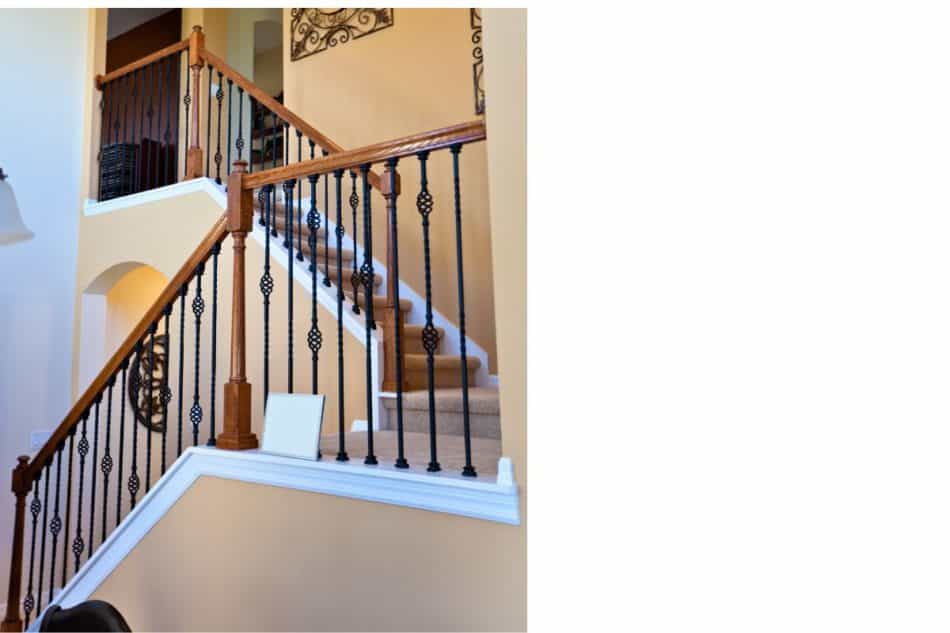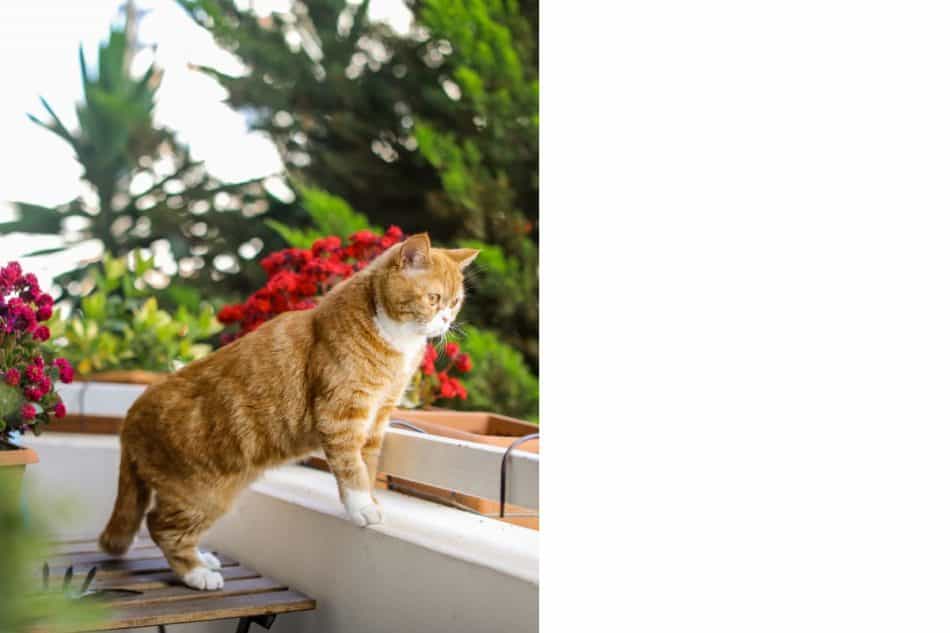I have lived with quite a few cats in my life, and I found them to be a constant source of amazement. One of the many attributes of cats that I admired was their incredible quickness, their leaping ability, and also their landing ability.
Table of Contents
6 Ways Cats are Able to Land on Their Feet:
1. Their Vestibular System
Perhaps you have heard that we humans have within our inner ears a fluid-filled physical structure that enables us to maintain our equilibrium, our balance.
It is called the vestibular system, and cats have one too. Theirs is built somewhat different from ours, but nevertheless serves a similar purpose.
The cat’s vestibular system enables a falling cat to know which way is down, so that the cat knows how to orient their falling body so their feet are pointed towards the ground. [1]
2. Flexible Backbone
If the fall begins with other than their feet pointed downward, the cat will have to twist their body in such a way so as to land feet first.
The cat has a very flexible backbone that allows them to arch their back in mid-flight and rotate their body so as to get their feet underneath them. [2]
3. Light Weight Bone Structure
What is known as terminal velocity is “the limiting uniform velocity attained by a falling body when the resistance of the air has become equal to the force of gravity.” [3]
A falling human will have a much faster terminal velocity than a falling cat, and will therefore land with a greater force and higher impact.
The cat has a slower terminal velocity because:
- A cat has a small bone structure [4] which contributes to a reduced ratio of weight to body size.
- Most cats have fur, which acts as resistance to gravity.
- Prior to putting paws down for landing a cat will tend to spread out, offering even more resistance.
4. Fast Reflexes
You do not have to live with a cat for very long to realize this animal has incredibly quick reflexes.
When a cat falls, if the kitty must adjust their body to get their feet under them, this has to happen fast. The quickness of the cat gives them the ability to do this.
5. Instinct
Kittens begin to exhibit the ability to do this at a very young age, and most have learned how to do it by age seven weeks. [5]
This is not something their mother can teach them. The reason kittens know how to land on their feet is because this is instinctual.
Instinct is an incredibly powerful and wondrous force. My blog post What Are Cat Natural Instincts offers more on this fascinating subject.
6. Padded Feet and Strong Legs
The pads on a cat’s paws have a shock absorbent effect when they land.
Those pads, in concert with sturdy limbs, and with joints that allow their legs to be positioned like a landing human’s bended knees, allows for the impact of a landing to be reduced. [6]
One might observe that the leg joints of cats are backwards relative to a human knee joint, but they operate on the same principle. Whether for jumping or landing, cats know how to bend their legs to achieve their purpose
Do Falling Cats Always Land on Their Feet?
No, they do not always land safely. They can be injured if:
- they collide with something on the way down
- they fall from a low place and they do not have time to right themselves
- they fall from a high place and they hit with a severe impact
- the surface they land on is littered with various objects such as jars or plants
- they land on an uneven surface such as a stairway
- they are old, disabled, or overweight
- they are sleeping when they fall
High Places Where a Cat Might Fall
1. Hand Railings
Hand railings have an attraction for cats.

Hand rails are typically about three feet above the floor when approached from one side, but may have a very high drop-off on the other side. Additionally, some hand rails are very narrow and have a curved shape on top. These features make hand rails not a good place for your cat to be leaping up to.
I once read that I should try putting aluminum foil on the railing to discourage a cat jumping up there, so I gave it a try. When our cat landed on the foil, the kitty was startled and fell, thankfully to the short side and landed safely. I never tried that again.
2. Exterior Balconies
At one time we had a kitty that loved spending time on the railing of our second-story porch. It was a favorite place for her, but I always worried about her falling, which thankfully she never did.
The problem with a cat spending time on an outdoor balcony is the possibility of falling, or perhaps almost as bad, the possibility of the kitty jumping.
Imagine if the cat in the photo below decided to chase whatever prey the kitty is staring at.

Without thinking the cat might leap. This spontaneous action could result in injury. Or the cat might run away. Or the kitty might fall. None of these scenarios are what you want to happen.
Outdoors can be a happy place for a cat, but is it worth the risk? I have a blog post that will help you decide what is best for your pet. You are invited to visit Should My Indoor Cat Go Outside?
3. Tops of Kitchen Cabinets
If your kitchen cabinets don’t go all the way to your ceiling, there is a platform up there that your kitty may find irresistible.
I have witnessed a cat scale the front of a cabinet to get to the top. I was amazed, but concerned. I think there was a lot of leap involved in the effort, and the kitty almost did not make it. Which is my point.
This kind of temptation could result in an unsuccessful attempt and a resultant fall. The cat may not have time to get those feet down with this kind of fall. Even if the kitty was able to right him or herself, would there be containers or glasses or whatever down below to fall upon and cause injury?
4. Open Windows
I know this is obvious, but I think it should be mentioned.
Cats love looking out of windows, and I think this is something they should be encouraged to do as long as the window is closed or has a scratch-resistant screen.
The information about screens you will find in my blog post Will My Cat Like a Screened Porch? may surprise you. There is more to know about screen material than you might imagine.
How Do I Keep My Cat from Getting Hurt by Falling?
- Try to keep areas where your cat tends to leap or jump free of clutter to provide a clear landing
- Keep your kitty indoors
- Make sure windows are closed or screened with sturdy material
- Provide safe high perches using cat trees as alternatives to cabinets and other unsafe places. See my blog post How to Choose a Cat Tree.
Since You Love Cats
You may want to visit my blog post Learn About Cats.
References:
[1] Vestibular Syndrome, Cornell University College of Veterinary Medicine
[2] Why Are Cats So Flexible?, James R. Richards, Cornell Feline Health Center, Cornell University College of Veterinary Medicine
[3] Merriam-Webster Dictionary
[4] Cummings School of Veterinary Medicine at Tufts University, How Cats Defy Physics When Landing on Their Feet, Catnip magazine, 12/19/2019
[5] LIVESCIENCE, Why Do Cats Always Land On Their Feet, 09/17/2012
[6] Wu, X; Pei,B; Pei, Y; et al. How Do Cats Resist Landing Injury: Insights into the Multi-level Buffering Mechanism. Journal of Bionic Engineering
